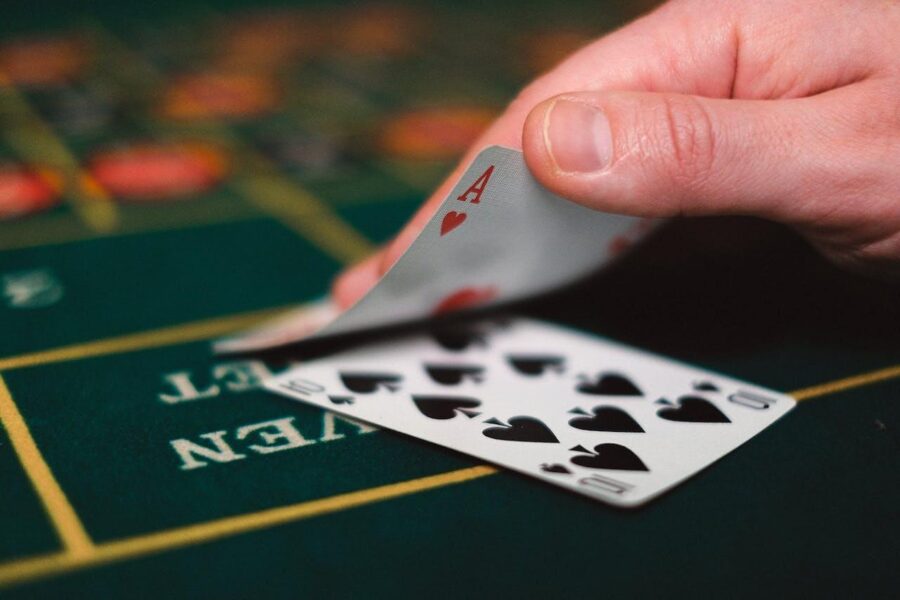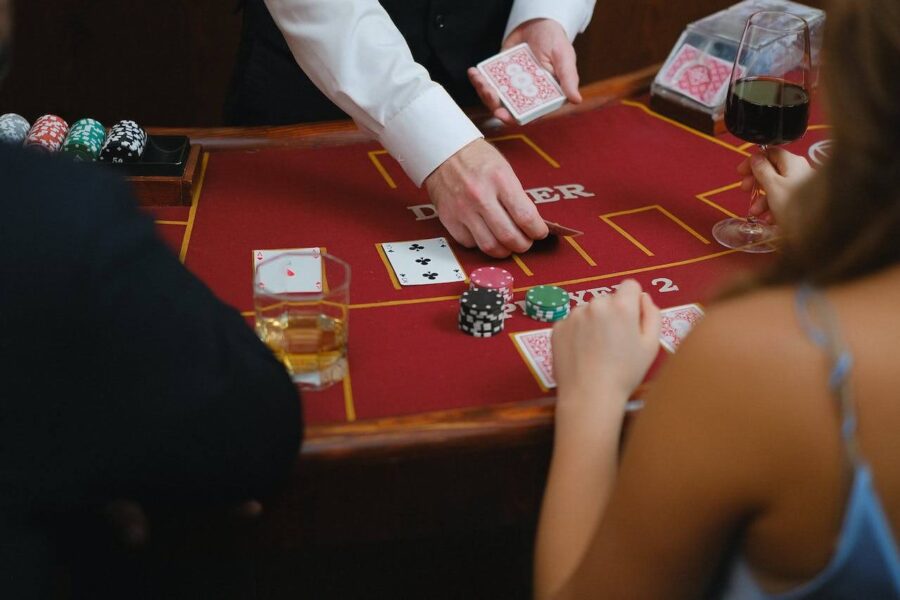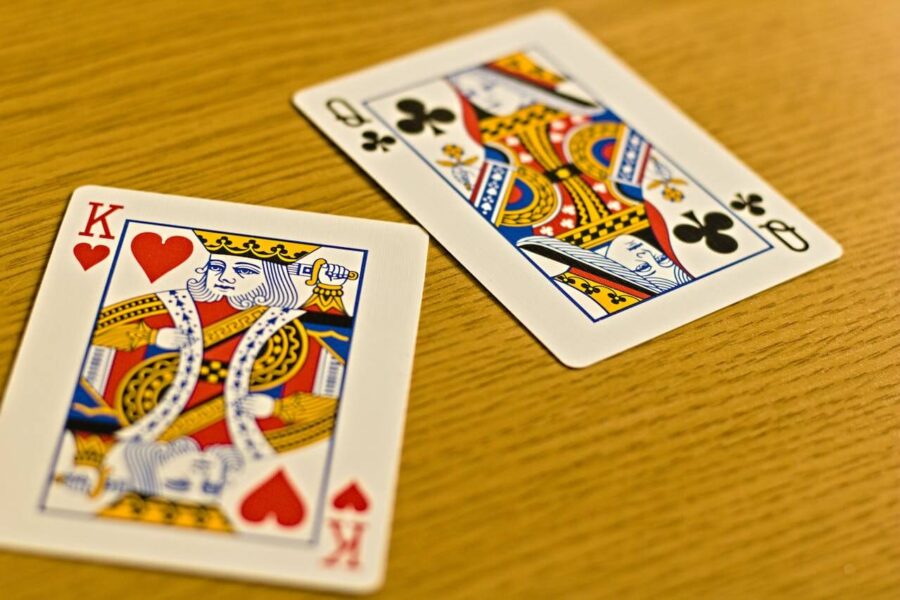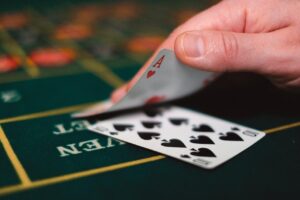What Is a Soft 17 in Blackjack?

Blackjack has several complexities that can make it quite difficult to learn for complete beginners, though you shouldn’t find it too hard to level up your skills after the initial learning curve. One of the biggest things that can trip new players up is the different types of bets and combinations, with a soft 17 in blackjack being one such example.
The soft 17 in blackjack can be a powerful part of your strategy if you use it correctly. The good news is that after reading this guide, you should know exactly when to utilize this strategy. We’ll cover what a soft 17 in blackjack actually means, along with whether you should even use it. On top of that, we’ll also outline what it means if a blackjack dealer stands on 17 – and much more.
Does the above all sound interesting to you? Fantastic. In that case, let’s get started.
What Does Soft 17 Mean in Blackjack?
The soft 17 in blackjack refers to when someone playing blackjack forms a hand of 17 out of an Ace and 6. The reason it’s called a soft 17 is because anything in blackjack that’s formed with an Ace card is considered a “soft” version.
In addition to totaling 17 with an Ace and a 6, you can also achieve a soft 17 in blackjack through several other combinations. These include:
- Three 2s and an Ace
- Two 3s and an Ace
Having a soft 17 hand can, when used correctly, put you at a significant advantage when it comes to winning your game. But on the flip side, you would quite like the dealer not to get that, as it could hinder your chances of success quite dramatically.
One thing worth noting about the soft 17 in blackjack is that it’s not only the dealer who is capable of achieving this amount. You can also, as a player, achieve a soft 17 if you get the right cards dealt.
Is the Game Over if a Dealer Hits Soft 17?
The game isn’t necessarily over if the dealer hits a soft 17. But at the same time, it does significantly increase the chances of them doing so, and the same is true if the player hits on a soft 17.
One reason why the soft 17 is so powerful is because you’re protected if your hand exceeds 21. This is very different from hitting on a hard 17 (i.e., 10 + 7 cards). If you were to get five or above in those scenarios, your card hand would go above 21, and you’d bust – meaning that you’re out of the game. But an Ace is more versatile; you can choose whether your Ace is 11 or 1, meaning that your hand has a better chance of surviving.
Of course, your hand being lower would potentially put you at a disadvantage when trying to reach a total of 21. But on the other hand, you can also argue that it gives you some more room for maneuver.

See also: How to Play Blackjack at Home
How Common Is the Soft 17 in Blackjack?
Getting a soft 17 in blackjack is quite rare, and the reason is that getting an Ace in your hand is generally speaking not very common anyway. In a deck of 52 cards (which is what most versions of blackjack use), you only have four Aces. So, you can easily go multiple games without even having the chance to hit a soft 17.
With the above in mind, you also need to have the other cards that make a total of 17. That could be two threes, a six, or something else – but it’s by no means guaranteed that you’ll have those at your disposal.
Should You Hit a Soft 17 in Blackjack?
First, let’s talk about what “hit” means. In short, this is when you ask for another card to add to your hand. With this in mind, it can be very beneficial to hit on a soft 17 in blackjack. The risk is quite low, as you can always change your Ace value to 1 if you accidentally go above 21.
Although it’s normally advisable to hit on a soft 17 when playing blackjack, you’ll need to think about the rules for wherever you’re playing. Some casinos will allow you to hit when you get a soft 17, whereas you’ll need to stand (i.e., not request another card) in other circumstances. So, before you begin playing anywhere, make sure that you understand the rules.
It’s also worth remembering that the house edge can vary for soft 17 depending on the individual casino’s rules. So, before you start playing anywhere, you should ensure that you understand what you can and cannot do in advance.
What Does It Mean if a Blackjack Dealer Stands on 17?
In addition to having soft 17 rules for the players, some casinos also impose restrictions on what dealers can do when they achieve a total of the same number. And in many instances, they also have to stand. If a dealer stands on soft 17, it often means that you still have a chance of winning – though you’ll need to make progress toward hitting 21 in the next couple of rounds.
Another thing worth remembering is that when a dealer stands on soft 17, the house edge will normally be lower. This can usually be around 0.2% smaller than if the dealer had hit instead. For that reason, the dealer opting to stand could lead to better returns if you manage to hit 21.
Blackjack Dealer Rules for Soft 17
As mentioned earlier, the rules that a blackjack dealer must follow when hitting a soft 17 will vary. Some casinos will allow the dealer to hit on soft 17, which puts the game significantly in their favor. Besides the house edge being higher, you will also have a minimal chance of achieving a hand total of 21 before they do.
But in other cases, the casino will require that the blackjack dealer stands and does not pick up more cards from the deck. In these circumstances, you will benefit from a lower house edge and better odds in your favor of winning (compared to the alternative). The drawback, however, is that you will often need to adhere to rules similar to those of the dealer.
What Does Blackjack Chart Stand 17 Mean?
While the soft 17 can result in difficulties for winning on your part, the situation isn’t entirely hopeless. You can do several things to potentially turn the situation around, and one of the wisest things to try is looking at the blackjack chart.
When you see the blackjack chart, you will see an option called “stand 17”. The chart is divided into different colors, which basically means that you should take into consideration both your hand and that of the dealer.
If you see stand for 17, it’s almost never for a soft 17. Instead, you’ll see either “Dh” (which means double if possible, but hit if not) or just the option to hit. This, however, is very different from when a dealer has a hard 17; the reason why is that there’s a very high chance that the dealer might bust compared to the soft 17.
When we look at the blackjack chart for a hard 17, you generally should always stand – regardless of what your card total is. The same goes for most hard hands above 17. Besides standing when the dealer gets this amount, you should do something similar when you have a hard 17.

See also: How to Win in Blackjack?
Blackjack Basic Strategy to Hit Soft 17
Now that you know some of the basics surrounding the soft 17 in blackjack, let’s look at how you can strategize hitting on said total when playing the game.
Study the Blackjack Chart
The first place to start when thinking of any blackjack strategy is to study the blackjack chart in as much detail as possible. You should think carefully about the different hit and stand situations, and you should understand when it’s best to do anything.
For the soft 17, the blackjack chart is quite easy to understand. You should almost always hit when you have the chance if you have a soft 17, though you’re of course bound by different rules in some cases. On top of that, it’s a good idea to hit when the dealer has a soft 17, as this could increase your chances of winning.
Check Your Casino’s Rules
Your casino rules will often determine what you can do when a soft 17 occurs. If it’s possible to hit, then you should definitely do that. But if you’re unable to do so, it’s very hard to do anything other than stand.
You can mitigate this problem by choosing a casino that allows you to hit when you get a soft 17. It’s possible to find these places both online and in person, so make sure you do some prior research and achieve the results you want.
Be Prepared for Things to Potentially Not Go as Planned
Of course, getting a soft 17 is advantageous – and it’s often more of a benefit than if you had a hard 17 hand instead. But despite that, things will not always go as planned. Sometimes, you might go above 21 and need to revert your Ace to a 1. In some cases, this is good for allowing you to get the cards required to reach 21. But in other instances, you might put yourself at more of a disadvantage.
Consider the House Edge
The house edge will play a role in bets for many table games that you play, and blackjack is no different. On top of that, you also need to know that there is a difference between the house edge for a hard 17 and soft 17.
If you hit a soft 17 in blackjack, the house edge will go up by around or just over 0.2%. On the other hand, a hard 17’s house edge is around 0.18%. Regardless of your bet, having a house edge will reduce your winnings if you are successful. To be honest, though, you can’t really escape the house edge either way – so you should just be aware of it and make do with it as much as possible.
Understand the Soft Hand Totals Besides Soft 17
While soft 17 is one of the most commonly known totals in blackjack, you should also think about the other options. You can form a soft combination out of many Ace variations, with the soft 15 being another example. The good news is that these are pretty simple to understand as they all follow the same rules as the soft 17.
Now that you know how soft hand totals work, you will have a much easier time when it comes to using them effectively in your blackjack sessions.
Do Other Casino Games Use it?
The soft 17 is very important to know when you play blackjack, but you’re probably interested in other table games as well. So, is it common to use soft and hard bets in other types of casino games?
Generally speaking, you won’t encounter the soft 17 rules in many other casino games. It’s something that largely exists within blackjack, and it’s also something that you will see in most versions of blackjack.
Conclusion: The Complete Guide to Hitting in Blackjack
The soft 17 in blackjack can make or break your game, and you’ve put yourself in a good position by understanding how it works. It’s thankfully very easy to learn, and it’s also a benefit if you find a casino that allows you to hit on a soft 17. However, you should also keep in mind that this will usually mean that the dealer is also allowed to hit – which would reduce your chances of winning.
The soft 17 is very different from a hard 17, and whether or not you should hit will also naturally differ depending on which one you use. You can use a couple of tactics and ideas to enhance your chances of using it successfully, which you will hopefully have now learned after reading this guide.
See also: When to Hit on Blackjack?











